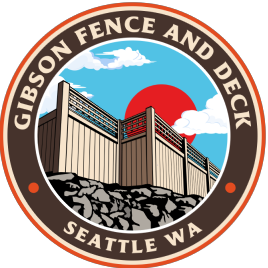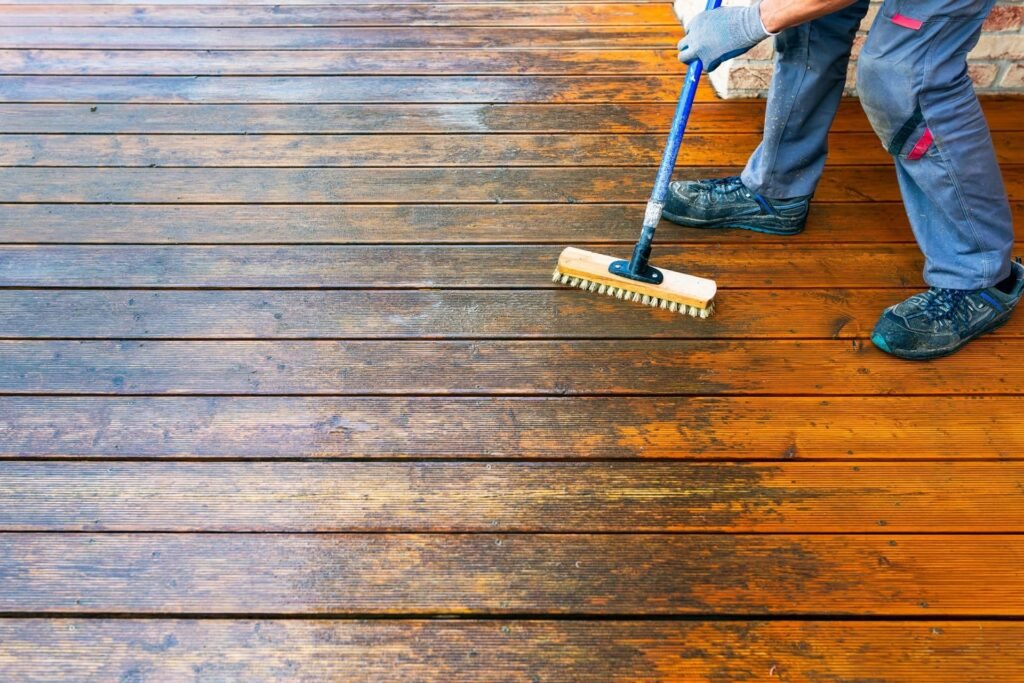How Long Does a Wood Deck Last?
A typical wood deck can last anywhere from 10 to 30 years, depending on the type of wood used and how well it is maintained. The longevity of a wooden deck is influenced by several key factors including the quality of materials, the climate and environmental conditions it faces, how it is constructed, and the level of maintenance it receives.
Factors such as exposure to rain, the scorching sun, and moisture can significantly impact a deck’s durability. Additionally, regular maintenance such as cleaning, staining, and sealing is crucial to protect the deck boards from decay, mold, and insect damage. The quality of deck materials and the construction technique also play pivotal roles in extending the life of a deck. By understanding and managing these elements, homeowners can ensure their deck remains a functional and attractive part of their outdoor living space for years to come.
Deck Lifespan Estimates Per Decking Material
Each type of decking material offers a range of lifespans that can be maximized through proper care and maintenance. Choosing the right type of wood and adhering to maintenance guidelines are key to ensuring your deck remains a lasting feature of your outdoor living space.
Pressure-Treated Wood
Pressure-treated wood decks can last approximately 15 to 30 years with proper maintenance. This type of wood undergoes a chemical treatment to resist rot, insects, and decay, making it a durable choice for decking. Regular sealing and periodic inspections are essential to reach the upper end of this lifespan.
Cedar
Cedar decks are known for their durability, typically lasting between 15 to 20 years. Cedar is naturally resistant to decay and insects, which helps extend its life as a cedar fence as well. To maximize longevity, regular maintenance including cleaning and sealing is recommended.
Tropical Hardwoods
Decks made from tropical hardwoods such as ipe or mahogany can have a lifespan exceeding 25 years, often up to 40 years due to their incredibly durable and natural resistance to weather conditions. These woods are very low maintenance but require an initial higher investment.
Preventive Measures
Redwood decks can last from 20 to 30 years when well-maintained. Like cedar, redwood is naturally resistant to moisture, decay, and insect damage, requiring less maintenance to maintain its integrity and appearance.
Composite Deck
Composite decks, while not made of traditional wood, offer a lifespan of 25 to 30 years. This decking material combines wood fibers with plastics and requires very low maintenance, making it a popular choice for those looking for durability without the need for frequent upkeep.
Protecting Your Deck and Your Investment
The longevity of a wood deck is influenced by several factors that can either extend or diminish its usable life. Understanding and proactively managing aspects such as environmental exposure, maintenance practices, material quality, usage patterns, and vulnerability to pests is crucial for maintaining a deck’s integrity and aesthetics. By addressing these key factors, homeowners can ensure their deck remains a durable and enjoyable part of their outdoor living space for years to come.
Climate and Environment
Wood decks are significantly affected by weather conditions such as rain, the scorching sun, and moisture. Prolonged exposure to harsh elements can accelerate decay and wear, impacting the deck’s structural integrity and appearance.
Recommendation: To extend the life of a deck in harsh climates, apply water-resistant deck sealants annually and construct with adequate shelter or shade to minimize direct exposure.
Maintenance Practices
The lifespan of a wooden deck heavily relies on regular maintenance. Routine tasks like cleaning, sealing, and periodic inspections are vital to prevent issues such as rot and mold buildup, which can compromise the deck surface.
Recommendation: Establish a consistent maintenance schedule that includes cleaning the deck at least twice a year, applying a quality sealant, and performing seasonal inspections for early detection of potential problems.
Quality of Materials and Construction
Using high-quality deck materials and employing proper construction techniques are crucial for building durable decks. Selecting the right type of wood, such as pressure treated lumber or hardwood decking, ensures natural durability and resistance to environmental factors.
Recommendation: Choose pressure treated wood or naturally durable woods like cedar and tropical hardwoods. Ensure that all construction follows best practices, using appropriate fasteners and supports to enhance longevity.
Usage and Load
Decks must be designed to handle the expected load and usage. Heavy furniture and frequent gatherings can stress the deck boards and structure, potentially shortening the deck’s lifespan unless designed adequately to withstand such pressures.
Recommendation: Design the deck with a load-bearing capacity in mind, considering the types of activities and the amount of furniture it will support. Use deck materials that can withstand heavy use and distribute weight evenly with proper spacing and support.
Pest and Decay
Preventing pest infestations and decay is essential for maintaining the health of a wood deck. Regular treatments to resist rot and checks for insect damage, such as from termites, help protect the wood and extend the life of the deck.
Recommendation: Treat the wood with pest repellent preservatives and conduct regular inspections for signs of infestation. Quickly address any areas showing signs of decay or pest damage to prevent further deterioration.
Implications of Common Wood Deck Materials
Different woods offer a variety of benefits and challenges for any new deck, each affecting the deck’s overall performance and longevity.
Pressure-Treated Wood
Pressure-treated wood is one of the best decking materials for those looking for a cost-effective and durable wood deck option. It is treated to resist rot and insects, making it ideal for building decks that absorb moisture and withstand environmental factors. While pressure-treated decks are versatile enough to be stained or painted, they require consistent maintenance needs to prevent issues such as warping and cracking over time.
Treated Pine
Treated pine, a type of pressure-treated wood, offers affordability and resistance to decay. It’s commonly used in wooden decks because it eventually rots slower than untreated varieties. Regular maintenance such as sealing and staining is necessary to protect against moisture and extend the deck’s lifespan.
Redwood
Redwood is prized for its natural beauty and durability, making it an excellent choice for those looking to invest in high-quality wood decking. It naturally resists moisture and decay, but like all wood, it requires maintenance to stay in prime condition. Redwood decks need enough space around them to ensure proper air circulation, which helps prevent the ground moisture from causing decay.
Cedar
Cedar offers a unique aromatic appeal and excellent resistance to weather and insects. It is less prone to warping, making it a stable choice for wooden decks. However, cedar still needs regular care including staining and sealing to maintain its appearance and structural integrity against wet conditions.
Tropical Hardwoods
Tropical hardwoods are known for their extraordinary durability and low maintenance requirements. These woods, including ipe and teak, are highly resistant to wet conditions and eventually rot at a much slower rate compared to softer woods. Their density and natural oils make them some of the best decking materials, although they require a higher initial investment.
Douglas Fir and Pine
Douglas Fir and Pine provide affordable options for deck construction. They accept finishes well, which is essential for wood decking that needs maintenance to withstand wet climates and absorb moisture effectively. While these woods offer economic benefits, they require careful installation with enough space for expansion and proper railings to ensure safety and longevity.
In building decks, selecting the right wood decking involves considering various types of materials and understanding their maintenance needs and how other factors, such as climate and usage, impact their lifespan. Properly chosen and maintained, these woods can provide a durable, functional, and aesthetically pleasing addition to any home.
Wood Deck Maintenance Tips
Maintaining a wood deck is crucial to ensuring its longevity and keeping it looking its best. Here are some essential tips for regular upkeep:
Regular Cleaning and Sealing
Regular cleaning is vital to prevent the build-up of dirt, mold, and mildew, which can degrade the deck surface over time. It’s recommended to clean your deck at least twice a year with a mild soap and water solution to remove any debris or stains.
Sealing your deck is equally important to protect it from moisture, rain, and the scorching sun. Apply a high-quality sealer every two to three years to maintain the wood’s natural color and integrity. This is especially crucial for wood decks that are prone to absorbing moisture, which can lead to decay.
Checking for Wear and Damage
Regular inspections are necessary to identify any signs of wear or damage early. Look for wet spots that don’t dry properly, stains, signs of wood rot, loose boards, and unstable railings. Early detection allows for timely repairs, preventing minor issues from escalating into costly repairs.
Pay particular attention to areas that come into contact with the ground, as these are more likely to absorb moisture and suffer from decay. Ensure that there is enough space between the ground and your deck boards to promote adequate air circulation and prevent moisture buildup.
Selecting the Right Chemicals and Cleaning Agents
When choosing chemicals and cleaning agents for your deck, opt for products specifically designed for the type of wood decking material you have. Using harsh chemicals can strip the wood of its natural oils and protective coatings, leading to quicker degradation and discoloration.
For pressure-treated decks or cedar decks, which may have different tolerances for chemicals, ensure you use a cleaner that won’t compromise the wood’s natural resistance to elements. Gentle, environmentally friendly products can effectively clean without causing damage.
Choose Wisely, Maintain Regularly
Choosing the right type of wood and committing to regular maintenance are key to maximizing the lifespan of a deck. Each wood type offers unique benefits and challenges, from the cost-effectiveness and durability of pressure-treated wood to the natural beauty and longevity of cedar and tropical hardwoods. Proper maintenance, including routine cleaning, sealing, and inspections, is crucial to protect your investment and ensure your deck remains a vibrant part of your outdoor living space for years to come.
If you’re planning to build a new deck or need assistance maintaining an existing one, consider working with Gibson Fence and Deck. Our expertise in building decks and our commitment to quality ensure that your decking project will meet your needs and exceed your expectations. Contact us today to explore how we can bring your dream deck to life!












